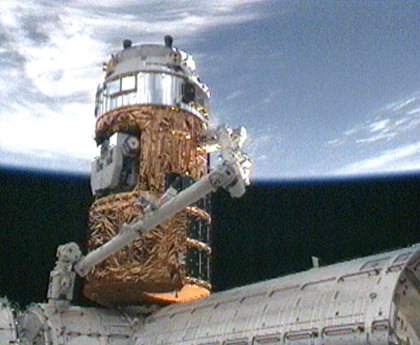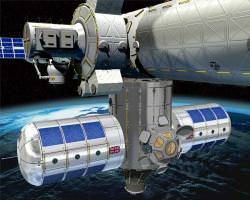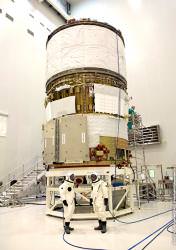In a true display of international cooperation, American flight engineer Nicole Stott, using Canada’s Canadarm2, captured the Japanese H-II Transfer Vehicle (HTV), with help from Belgium’s Frank DeWinne and Canada’s Robert Thirsk, under the direction of Russian ISS commander Gennady Padalka. The unpiloted HTV arrived at the International Space Station Thursday and later was attached to the Harmony node at 6:26 p.m. EDT. The HTV launched on Sept. 10, and took seven days to reach the ISS so controllers could run various tests and demonstrations on its maiden voyage.
“We had an amazing time doing this,” said Stott, “and we’re so happy to have this beautiful vehicle here. We look very much forward to going in tomorrow and finding all the supplies that I’m sure you’ve stored there for us.” The crew then offered a toast to the new vehicle with their recycled water drink bags.
Stott only had 99 seconds to latch onto the cargo ship before it moved past the station and into another orbit. It came to with nine meters (30 feet) away from the lab before going into free drift so it could be grabbed by the arm.
[/caption]
The crew will open up the HTV on Friday afternoon.
The HTV can bring up to six tons of supplies to the ISS, and will be used to dispose of spent equipment, used clothing, and other waste material when it later undocks and burns up the Earth’s atmosphere during re-entry.
The success of the HTV is crucial for station re-supply, especially when the space shuttle is retired.
“After the space shuttle starts to fade away, we will take over responsibility to bring stuff up to the space station. We’re really looking forward to the success of this mission,” Japanese astronaut Soichi Noguchi, who is scheduled to launch to the ISS in December, said before HTV-1’s arrival.
Source: NASA




